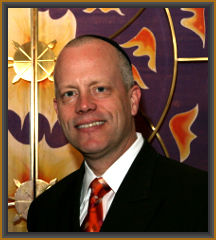
 |
October 8, 2021 (2 Cheshvan 5782) New Meanings: Old Significance Dear Friends, I hope this correspondence finds you well and in good health and cheer. We hope you will be able to join us, either in-person or on Zoom, for our services this Shabbat morning, when we will have the opportunity to celebrate an Aufruf in honor of a couple’s upcoming wedding! In his scholarly book called Rituals of Childhood, Ivan Marcus, a professor from Yale University, explains the anthropological phenomena of acculturation, in which minority cultures adopt practices from the surrounding majority culture, yet adapt those practices, to differentiate them from their original setting. In this volume, Marcus investigates how medieval Jews were aware of, drew upon, and polemically transformed Christian religious symbols into Jewish counterimages and then created a new ritual, which marked a boy’s entrance into a formal school setting. This past Motza'ei Shabbat (just after Shabbat), I was reminded of the concept of acculturation, when a friend of mine texted me to invite me to join his family online for a special Havdalah program in support of Chicago’s Jewish LGBTQ community. The program lasted about an hour and featured inspirational readings, words of Torah, and various musical selections. While I was impressed by the program itself and uplifted upon hearing of people’s courage in the face of the tremendous challenges surrounding gender identity issues, I literally couldn’t understand why the program was taking place on the last Saturday night of September and not in June, which is nationally considered to be Gay Pride Month. June was originally chosen as Pride Month to honor the 1969 Stonewall Uprising in Manhattan, which represented a tipping point for the Gay Liberation Movement in the United States. Later in the evening, it was pointed out to me that the Jewish LGBTQ community has appropriated Parashat Noah as Pride Shabbat due to the appearance of the rainbow at the end of the flood story.  Within the context of the Torah, the rainbow represents hope for a positive future, the Divine promise to never again destroy the world by flood, and the presence of God’s guiding hand. In the LGBTQ community, the rainbow was originally adopted as a symbol in 1978 and the colors represent intimacy, healing, sunlight, nature, art, harmony and spirit. In the words of Gilbert Baker, the artist-originator of the flag symbol, “Our job as gay people was to come out, to be visible, to live in the truth, as I say, to get out of the lie.” I don’t know what the future will bring in terms of the greater Jewish community’s awareness of Parashat Noah as Pride Shabbat, but it is fascinating to witness acculturation in its initial stages. May this Shabbat allow us all to recall the importance of inclusiveness in the Jewish world, while remembering the promise of God to keep his covenant with humanity throughout the generations. Shabbat Shalom, Rabbi Eric L. Wasser, EdD
|